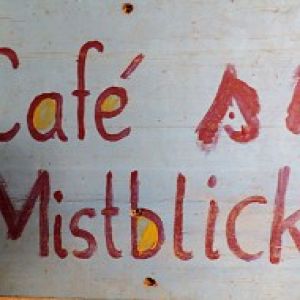Lactating the bees
Or better said treating them with lactic acid against the varroa mite.
A treat it wasn't and I felt bad about having to spray them with the stuff given it was at best +10°C. Did however make sure the acid was handwarm.
We don't use any "manufactured" chemical treatments.There are three types of "organic" acids we use:
Formic acid in warm perods (ca. 20°C) which evaporates pungent fumes.
Oxalic acid in cold periods (0°C - +5°C) which is dribbled over & down the frames.
Lactic acid in cool periods: (+7°C-+10°C) which is sprayed all over the bees themselves.
The treatments are dependent on the weather/season. Formic acid can be done regardless of the state of the hive, the other two only when there is no more egg laying. None of the treatments take place when honey is being collected but one treatment can be necessary around July between the summer flower and honeydew crops. Depends on varroa mite numbers but generally 3 to 4 treatments a year.
The lactic acid is the most time consuming as each frame has to be pulled out and sprayed on each side. It also seems to be very "unfair" giving them a shower when it's so cold! However the treatment has to be done now before the 22nd and the theoretical start of the bee year. As the days get longer again, the queen will start laying again.
Lactic acid isn't as strong as formic but one still needs to take some protection for eyes and hands.
Started with the weakest colony thinking I could get used to the procedure in peace & quiet. Opened up the hive and they came at me with vengeance. Took cover and lit the smoker. Then returned and in fact they quietened down quickly even though tghe smoker didn't want to do it's job. The other three hives went well.
I am quite pleased with the state of things especially since putting on duvet type padding on the frames and removing the plastic sheet. I am sure the risk of condensation damage will be reduced. I hope the weakest colony makes it is over winter. The other three seem to be OK.
After the very poor 2014 honey year, it would be nice to have a full, normal year with the 3 types of honey - dandelion in May, summer flowers in June and honeydew in July/August. I have learnt quite a bit this year, at least lots of "how not to".
Being probably the last Blip this year, my thanks as always to MrB for his support and help.
- 0
- 0
- Nikon COOLPIX P520
- 1/100
- 21mm
- 90

Comments
Sign in or get an account to comment.


